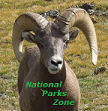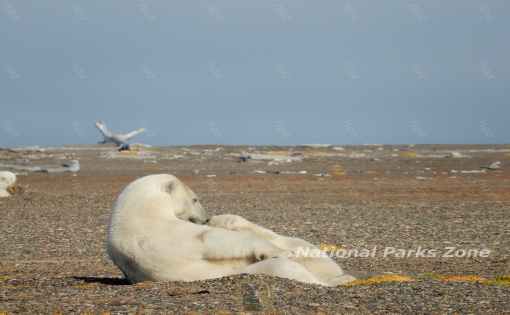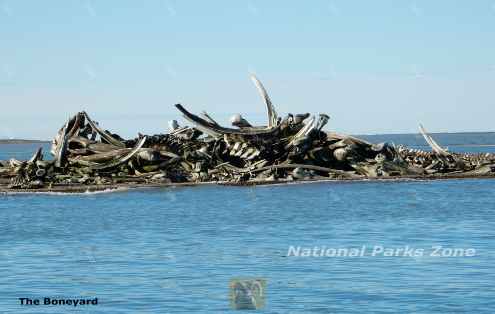Copyright © 2014-
All Rights Reserved

Updated 02/11/23 7:04 PM
Kaktovik, Alaska - Polar Bears
Kaktovik, Alaska, on the Arctic Ocean, is the most remote village in Alaska. Accessible only by small planes it is a place where you can see polar bears up close.
Alaska
2015
Viewing Polar Bears in the Wild
This past August my wife and I took a flightseeing tour from Fairbanks,Alaska to a village called Kaktovik. Kaktovik is on the Beaufort Sea of the Arctic Ocean just a few dozen miles from the Canadian border. It is also just outside of the northernmost edge of the Arctic National Wildlife Refuge (ANWR).
We signed up for this excursion with the Northern Alaska Tour Company, which uses Warbelow’s Air Service, back around February because there’s only one flight a day and it can only take a maximum of six people. When you get to Kaktovik you board a small boat which takes you to some barrier islands where the polar bears congregate.
On the day of our flight we had to be at Warbelow’s, at the Fairbanks airport, somewhere around 6 AM. They weigh you in, which is typical on small flights where they distribute people based on their body weight, and check that you had no more about 15 pounds of carry-
The flight was on a twin engine Cessna which took about 2 hours to get to Prudhoe Bay for refueling. It refuels on the way up to Kaktovik so we were able to fly directly from Kaktovik back to Fairbanks later in the day after the tour was finished.
From Prudhoe Bay you fly about 45 minutes over the Arctic Ocean hugging the Alaska coast. Between the desolation of the ANWR, and the floating ice in the Arctic Ocean, you really have a sense of how remote a place you are in and are headed for.
Coming in for the landing at Kaktovik I saw my first polar bear trotting along the barrier island just below us. We landed on a dirt airstrip and were driven by van to the Marsh Creek Inn for lunch. Kaktovik is an Inupiat Eskimo village of about 300 people. I’m told it is the most remote village in Alaska – furthest from any other village or city in Alaska. While it is certainly not the prettiest place, these Native American villages rarely are, they serve as a reminder of how tough it is to live in such a remote place and the difficulties of making enough money to have so many of the things we take for granted.
At the Marsh Creek Inn we had a buffet lunch that was quite good. After that we were taken in a van down to the dock where we boarded a small boat, which had a little cabin big enough for six people and the captain, and headed off to find some polar bears.
Polar bears are generally solitary creatures that only come together to mate. The number of polar bears at Kaktovik is very unusual. We saw at least 10 different ones and one of my pictures has five polar bears in it. The captain told us that the reason that there are so many polar bears at Kaktovik is because of the village’s annual whale hunt. It seems there are plenty of leftovers, once the villagers take their share, and the polar bears take advantage of that. Sadly, with global warming, and the disappearing sea ice, polar bears are stressed creatures and laying around the barrier islands, conserving energy while waiting for the whale hunt leftovers, seems to work for them.
We left the dock at Kaktovik and traveled a short distance to some barrier islands. Along the way we passed the ‘boneyard’ (picture at top of page). This is a very large pile of whale bones left over from the hunts of years past. From the dock the polar bears were probably less than a mile away. It was good that they were close because one of the things on my mind was the thought of being caught in a small boat on the Arctic Ocean should the weather turn bad. I’m not really very fond of being out on the water. A boat is something I will never have.
We immediately started seeing polar bears. Being in a boat allowed us to get fairly close to them. We were much closer than anybody in their right mind would get to a polar bear on land. Unlike grizzly bears and black bears, who don’t like humans and tend to avoid them, to a polar bear a human is seen as food.
As I said we saw at least 10 polar bears. There was several who had cubs that were probably well into their second year. Mothers with cubs were the only polar bears that would be together. And if another polar bear approached a mother, who was laying there with her cub, the mother immediately got up ready to defend her baby. The other bear would then give her a wide berth.
We probably spent about 2 to 3 hours photographing and observing the polar bears. Fortunately it was a nice sunny day and the temperature was probably in the 30’s but, with the right clothing, and having a cabin with a door to go into if one felt a bit cold, the weather was not a problem.
The captain took us back to the dock where, a few minutes later, our van arrived to take us back to the airstrip. We boarded the plane, took off, and flew straight back to Fairbanks. The trip was about two hours and crossed the Arctic National Wildlife Refuge and then the Alaska Range which was beautiful and snow covered. We arrived in Fairbanks around 6 PM and, while it was a long day, seeing polar bears in the wild and up close was one of the highlights of our trip.
The trip was expensive, $3000 for my wife and I, but it was an experience we will never forget. The only other place in North America where you can see polar bears is Churchill, near Hudson Bay in Canada, and that’s even more expensive (but you do stay the night). Churchill is also a destination in and of itself. There really isn’t anything else out there. The trip to Kaktovik was a one-
The plight of Alaska’s polar bears at Kaktovik was featured one night during the week of November 27, 2017 in a full half hour segment of ABC’s Nightline. Prior to that it was featured in a New York Times article. While we watched this on TV the satisfaction of seeing a place that we’ve been to was tempered by the reality of the precarious plight of these beautiful, exciting creatures.
Wildlife
The polar bears were the only wildlife to see. This is on the shores of the Arctic Ocean and, while I am sure there are Arctic Foxes and some bird life, polar bears were all that we saw.
Lodging and Dining
The Marsh Creek Inn is the only dining option and that was arranged by the tour. The Inn did have some limited rooms available for people who arrange overnight stays. Other than wildlife photographers I don’t think many people arrange for a flight up and another one to pick them up and take them back.
Hiking
As a tour there is only the boat ride to see the polar bears. This is not a hiking destination. Given the amount of polar bears in the area, hiking would be a rather risky endeavor.
Kaktovik Photo Gallery
Other Resources


Other National Parks and National Monuments Within a Day’s Drive
There are no national parks or monuments within a days drive. This is about the most remote settlement in Alaska. There are no roads in or out. It is a full day trip out of Fairbanks by plane.
*N*P*Z*N*
National Parks Zone